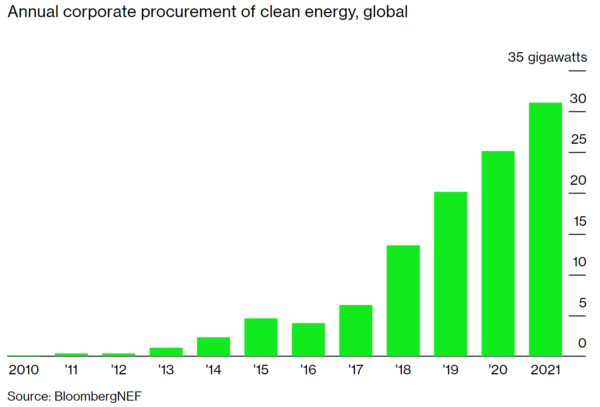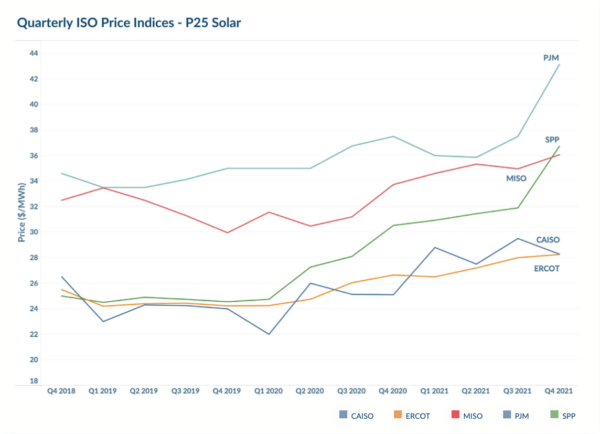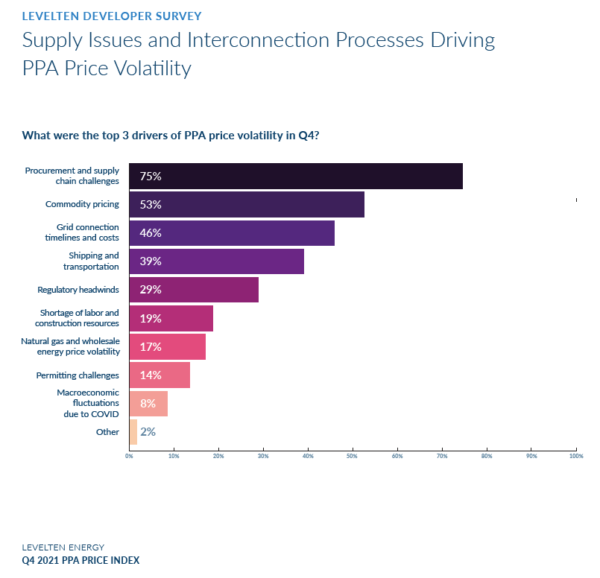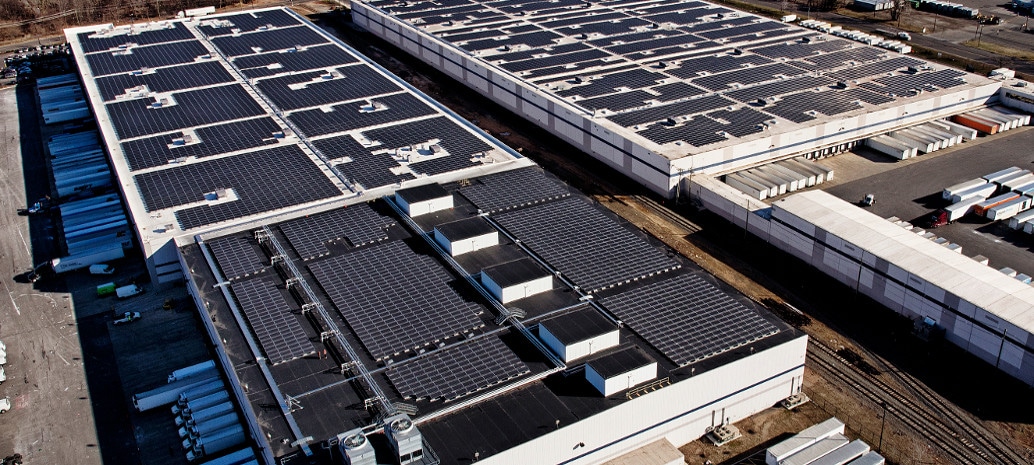Bloomberg New Energy finance has reported that global procurement of renewable energy contracts by corporations has set a new record of 31GW capacity. The majority of that capacity was procured in the Americas, with 17GW coming from the United States and 3.3GW from other nations in North and South America.

Europe, in the grip of a massive run up in electricity pricing due to natural gas politics with Russia, signed 12GW of capacity. Asia actually saw a significant drop from its 2020 procured volume to 2GW in 2021.
Bloomberg reports that a majority of the capacity was solar power. Amazon and Microsoft led the procurements with 38% of the capacity, and 8.2GW of that capacity was solar power.
All of these record purchases occurred despite steadily increasing pricing in the solar industry. LevelTen Energy’s most recent report – Q4 2021 PPA Price Index – showed prices increasing 5.7% – up to $34.25/MWh.

However, the price increases varied by region. For instance, California’s CAISO stayed flat, while PJM & SPP increased 15% and 15.1%, respectively.
Year-over-year pricing increases were immense – averaging 12.1% for all US regions. Texas’ ERCOT region saw the lowest increase of 6.9%, while SPP prices were up more than 20%.
A LevelTen developer survey suggests that the price increases began in early 2020 as a result of increased demand, macroeconomic fluctuations, supply chain issues, and a confluence of other factors.

One might suspect that the increases in global electricity pricing are driving the ever-increasing demand for solar, but Bloomberg suggests otherwise – and their data follows.
Bloomberg reports that 67 companies joined the RE100 last year – making for a total of 355 companies now committed to 100% renewable energy, totally offsetting their electricity use.
Of course, when we review the chart at the top of the article, it becomes apparent that corporate procurement volume had already been increasing at a consistent rate. Large increases began long before the solar hardware price increases in 2020 or the electricity pricing increases in 2021.
For US solar developers, it might speak positively on the opportunity to continue selling solar power projects at pricing that pays respectable development fees.
The U.S. is exporting every molecule of LNG it canhttps://t.co/2sIMbeGI7P via @SergioChapa pic.twitter.com/y1KFN8eaDv
— Stuart Wallace (@StuartLWallace) February 13, 2022
One final factor worth considering: renewable procurements in the United States may be motivated in part by our increasing exports of US Liquid Natural Gas. According to the EIA, these exports have led to today’s higher natural gas prices, as a result of the United States’ increased exposure to global pricing of the fuel.
This content is protected by copyright and may not be reused. If you want to cooperate with us and would like to reuse some of our content, please contact: editors@pv-magazine.com.








I was hoping to see the falling price trend continue which would continue increasing solar and decreasing fossil-fuel usage at an accelerating rate. It’s still happening but too bad to see things like this that will tend to reduce the acceleration. Also, the solar panel tariffs aren’t helping in the short term. Maybe they’ll help in the long term if US manufacturing efficiency and capability increases enough.
One not so bad thing about this Dan is that these price increases are occurring at the same time that fossil price increases are occurring. So the effect is blunted. Correct, it’d be great to see prices falling to speed things up – but to be honest – other variables beyond these increases are slowing things down more so.
I agree John. I’ve been waiting and watching these technologies all my life and always wishing there were smarter and more forward thinking individuals in control and we could improve the world faster. But I’m still optimistic that I’ll get to see the world mostly wean itself off of fossil fuels long before I die.
With you Dan